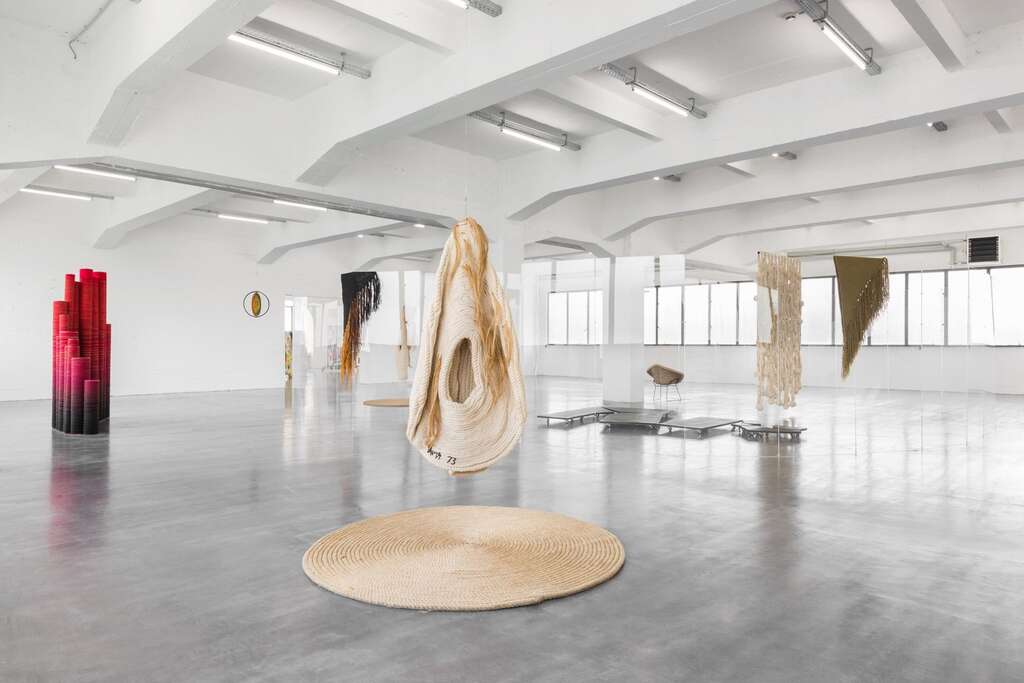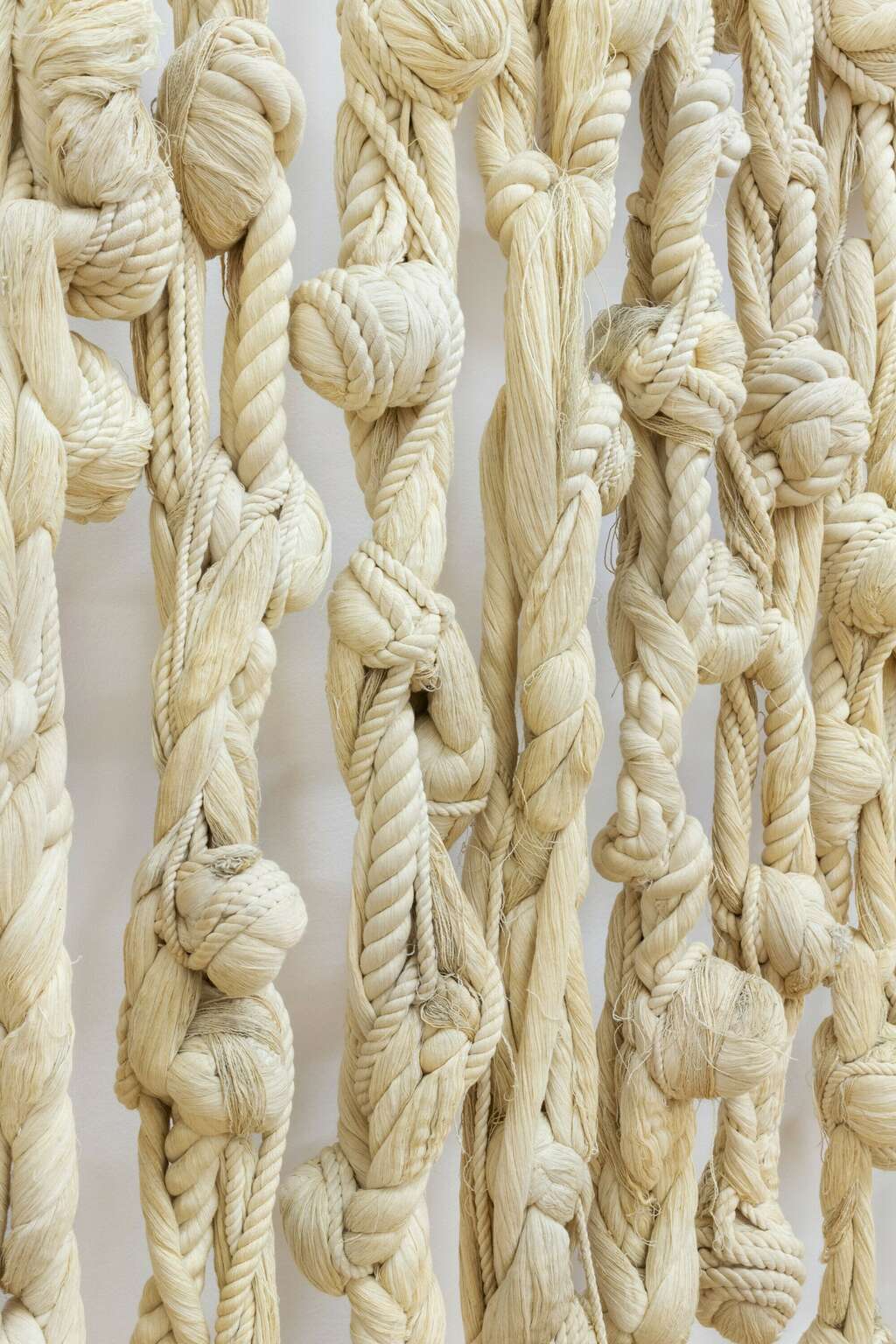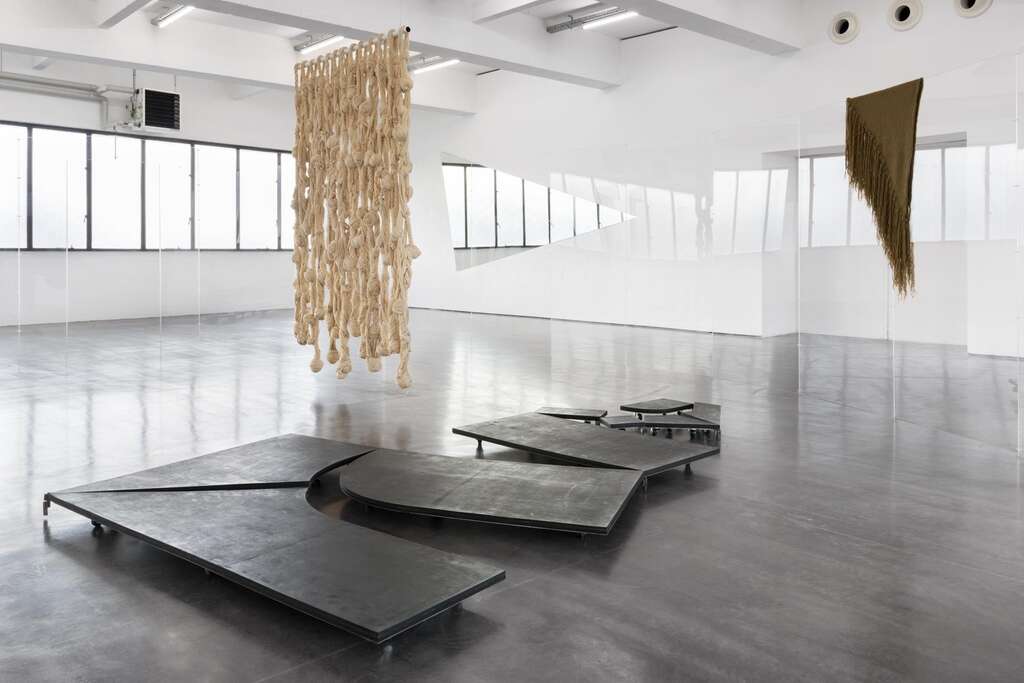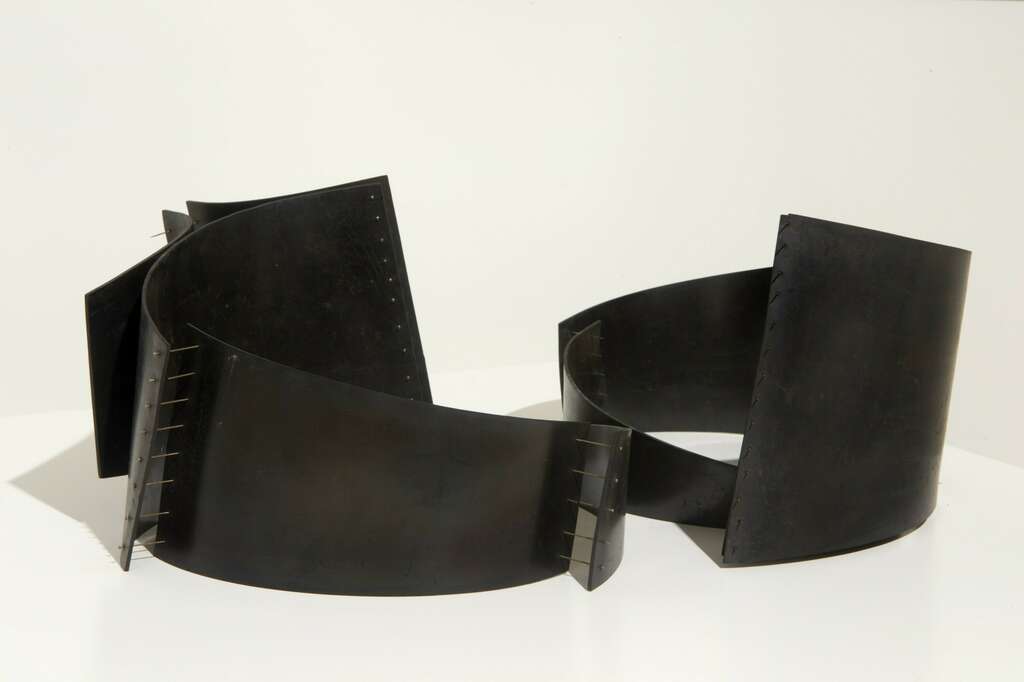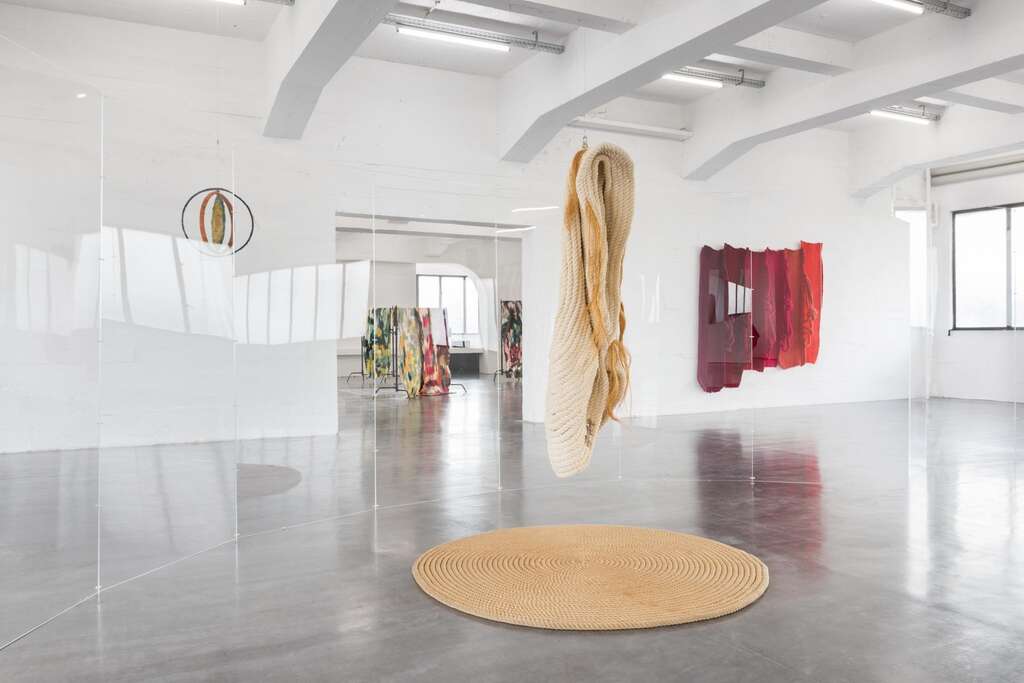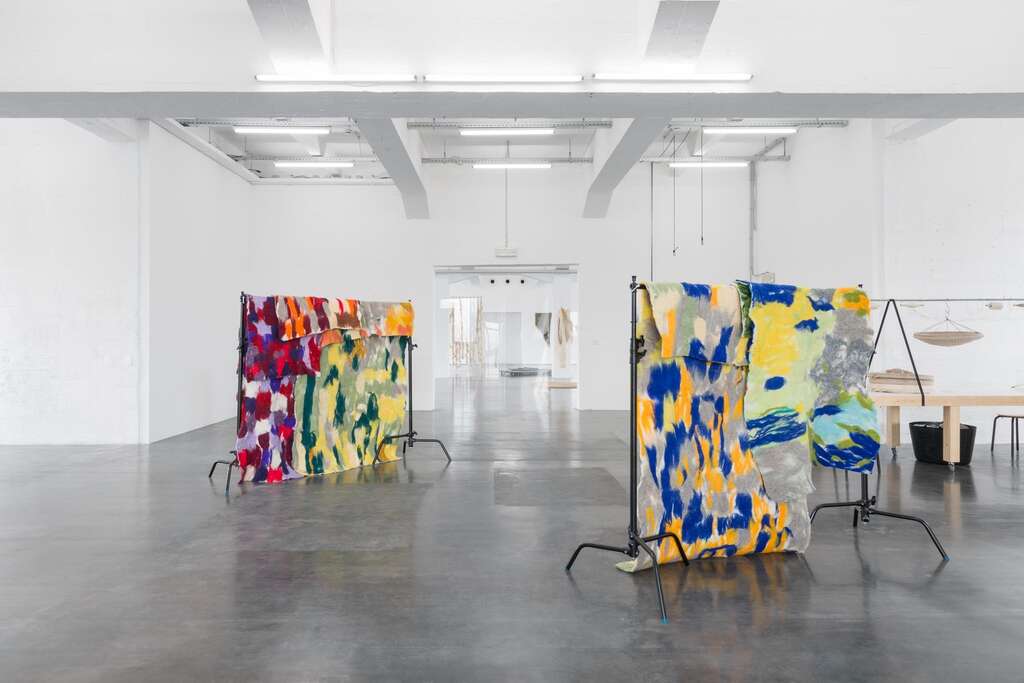Tapta
Espaces souples
With Greet Billet, Hana Miletić and Richard Venlet
The Polish-Belgian artist Tapta set out in the 1960s to radically redefine sculpture by using textiles and other flexible materials as sculptural elements. This exhibition centres on Tapta’s attention to the tactility of her materials, the suppleness of structures, individual and collective practice, and the interaction between artwork, space and viewer. New work by Greet Billet, Hana Miletić and Richard Venlet is also presented in relation to Tapta’s historical pieces.
Tapta (pseudonym of Maria Wierusz-Kowalski) was born in Poland in 1926 and came to Belgium as a political refugee with her husband, Christoph, after taking part in the Warsaw Uprising of 1944. She studied fine art and weaving at the National School for Advanced Visual Arts La Cambre, Brussels, from which she graduated in 1949. Shortly afterwards, the couple moved to the Belgian Congo (now the Democratic Republic of Congo), where they lived from 1950 to 1960. After returning to Belgium, Tapta swiftly established herself as one of the most important members of a new generation of artists, who sought to redefine sculpture by using textiles and other flexible materials as sculptural elements. In doing so, she simultaneously took textile art beyond the categories of ornament and craft.
The exhibition focuses on Tapta’s signature works from the 1970s, in which she steadily distanced herself from traditional weaving through experimental techniques such as twisting her woven pieces and particularly the use of ropes, which she knotted and joined together. Her work became more three-dimensional and increasingly interacted with the space and the viewer, who was invited to experience the works not only visually but also in a tactile and physical manner, stepping around and even inside them.
"What’s my dream? To create softly formed places that envelop you and protect you from the outside world. They become zones of peace and friendship.
What’s my dream? To feel enveloped not only by these textile forms, but also by their extensions: large shadows on the walls. That’s when real and imaginary, past and future merge and you feel reconciled with everything."
Her activation of the viewer is likewise manifested in her neoprene works, which she began to make in the late 1980s and which marked a radical turn in her use of materials. Large black surfaces connected by metal bars and bolts form open structures which the viewer has to walk through or past. Elsewhere, the elements of the sculpture are connected by hinges, allowing their shape to be changed.
Tapta’s appointment as teacher at the National School for Advanced Visual Arts La Cambre was just as important as her artistic practice. She headed the textile workshop there from 1976 to 1990, renaming it ‘Flexible Sculpture’. Rather than instructing her students – Ann Veronica Janssens, Monica Droste and Marie-Jo Lafontaine among them – in a particular technique, she prioritized the development of an open and critical mind. Tapta died unexpectedly in 1997, just as her native Poland was discovering her work at a major solo exhibition at the Zachęta National Gallery of Art in Warsaw.
In addition to historical works by Tapta herself, the present exhibition includes new pieces by three contemporary artist-teachers, Greet Billet, Hana Miletić and Richard Venlet, who respond from within their own practice to specific aspects of Tapta’s oeuvre, such as the interaction between artwork, space and public.
Reconstruction project
Perhaps the most innovative part of Tapta’s oeuvre is her environments from the early 1970s. As far as we know, of these impressive installations, made of ropes strung together in which the viewer can take a seat, only one survives: Formes pour un espace souple (1974), now in M HKA’s collection. However, due to careless preservation in the past, the work is in poor condition. In order to be able to publicly display the work again in the future, a reconstruction of the installation will be worked on as part of the exhibition. Using the same materials and following the same techniques, textile designers and students from La Cambre and LUCA School of Arts, will make the process-related and collective experience that Tapta pursued tangible again.
Curator: Liesbeth Decan
In collaboration with the Intermedia Research Unit of LUCA School of Arts, Brussels
The exhibition is generously sponsored by Maurice Verbaet
Thanks also to the Flemish Government, LUCA School of Arts, M HKA and Ateliers Wauters
Related Events

OPENING: Shezad Dawood & Tapta

Felt Workshops
Conversation between Ann Veronica Janssens, Michel Baudson & Liesbeth Decan (FR)

Lecture by Liesbeth Decan (EN)

Look Who’s Talking: Greet Billet, Hana Miletić, Liesbeth Decan & Richard Venlet (NL)

Look Who's Talking: Virginie Mamet (FR)
With the support of


Maurice Verbaet
The Flemish Government
LUCA School of Arts
Ateliers Wauters

